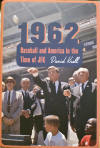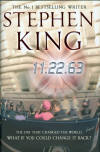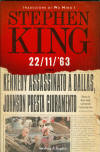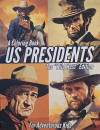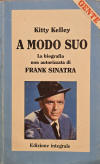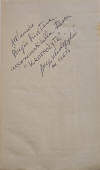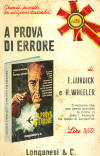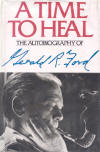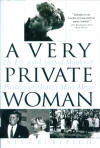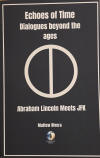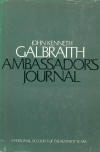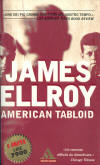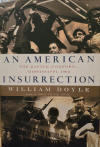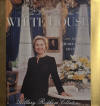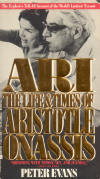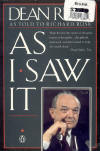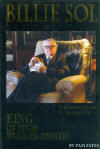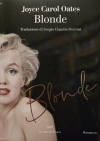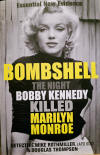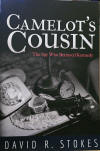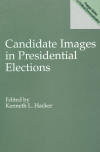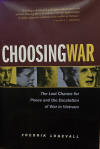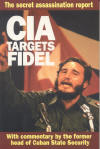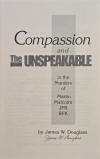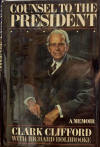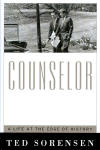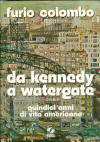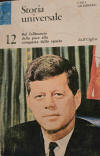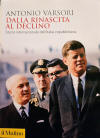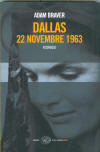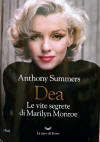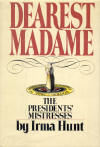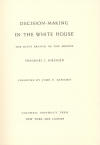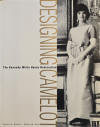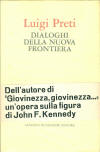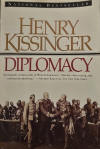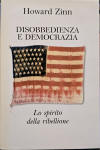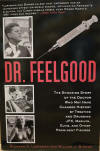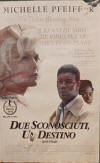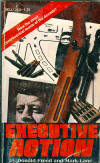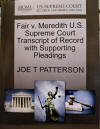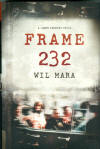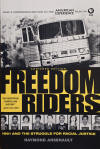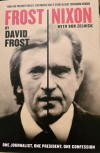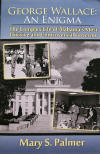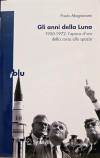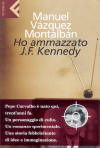|
D - Misc books/video related to JFK Years |
| Books 1 - 50 | ||
|
1962 - Baseball and America in the Time of JFK |
||
|
David Krell |
In the watershed year of 1962, events and
people came together to reshape baseball like never before. The season saw
five no-hitters, a rare National League playoff between the Giants and the
Dodgers, and a thrilling seven-game World Series where the Yankees won
their twentieth title. Baseball was expanding with the Houston Colt .45s and the New York Mets, who tried to fill the National League void in New York. Despite their record, the '62 Mets revived National League baseball in a city thirsty for an alternative to the Yankees. Earlier that year in Los Angeles, Dodgers owner Walter O'Malley launched Dodger Stadium, a state-of-the-art ballpark in Chavez Ravine and a new icon for the city. Beyond baseball, 1962 was also a momentous year in American history: Mary Early became the first Black graduate of the University of Georgia, First Lady Jackie Kennedy revealed the secrets of the White House in a television special, John Glenn became the first astronaut to orbit Earth, and JFK stared down Russia during the Cuban Missile Crisis. Weaving the 1962 baseball season within the social fabric of this era, David Krell delivers a fascinating book as epochal as its subject. |
|
|
11.22.63 |
||
|
King
Stephen |
Novel. Jake Epping is an English teacher in Lisbon Falls,Maine, who makes extra money teaching in an adult education programme. One day, he receives an essay from one of his students - a harrowing first person story about the night, fifty years earlier, when Harry Dunning's father came home and killed Harry's mother, his sister, and his brother with a sledgehammer. Later, Jake's friend Al, who runs the local diner, divulges an extraordinary secret: his storeroom is a portal to 1958. He enlists Jake on an insane - an insanely possible - mission to try to prevent the Kennedy assassination. Inspired by his desire to put things right for Harry Dunning, Jake leaves a world of iPods and mobile phones for a new world of Elvis and JFK, of big American cars, root beers and Lindy Hopping. It is a haunting world of a troubled loner named Lee Harvey Oswald and a beautiful high school librarian named Sadie Dunhill, who becomes the love of Jake's life - a life that transgresses all the normal rules of time. With extraordinary imaginative power, King explores the culture of the era and weaves it into a devastating exercise in escalating suspense. 11.22.63 is a love story, a tribute to a simpler time and place and a heartstopping "What if" tour de force the like of which no-one has ever read. |
|
|
22/11/63 |
||
|
King
Stephen |
Novel. Italian version of Stephen King's book "11.22.63". |
|
|
A Coloring Book: US Presidents - The "Wild West" Edition |
||
|
Arcade
Circus |
Book
for kids. Prepare to traverse the wild frontier where U.S. Presidents are reimagined a bold outlaws and rugged cowboys in the "U.S. Presidents - Wild West Edition" coloring book. This is not your tipical ride through the annals of history as we gallop off the beaten path to breathe new life into the tales of our nation's leaders. However this book offers more than just coloring. Embark on an untamed journey of historical discovery with each coloring page. Designed for curious minds and young historians, this coloring book is a unique way to explore the presidency and learn about the people who have led US. |
|
|
A
modo suo |
||
|
Kitty
Kelley |
Italian version (1989) of the
book
"His Way"(1986).
Distributed together with Italian magazine "Gente" , number 31.1989.
This is the book that Frank Sinatra tried—but failed—to keep from publication, and it’s easy to understand why. This unauthorized biography goes behind the iconic myth of Sinatra to expose the well-hidden side of one of the most celebrated—and elusive—public figures of our time. Celebrated journalist Kitty Kelley spent three years researching government documents (Mafia-related material, wiretaps, and secret testimony) and interviewing more than 800 people in Sinatra’s life (family, colleagues, law-enforcement officers, friends). The result is a stunning, often shocking exposé of a man as tortured as he was talented, as driven to self-destruction as he was to success. Thanks to my friend Diego Verdegiglio, who gave me this book. |
|
|
A prova di errore |
||
|
Burdick
Eugene & Wheeler Harvey |
Italian version (1968) of the novel
"Fail-Safe"(1962). On the cover of 1968 Italian edition :"il romanzo che non aveva previsto la morte di John F.Kennedy ma quella di Jacqueline". Fail-Safe is a best-selling novel by Eugene Burdick and Harvey Wheeler. The story was initially serialized in three installments in the Saturday Evening Post on October 13, 20, and 27, 1962, during the Cuban Missile Crisis. The popular and critically acclaimed novel, released in late October 1962, was then adapted into a 1964 film of the same name directed by Sidney Lumet and starring Henry Fonda, Dan O'Herlihy, and Walter Matthau. In 2000, the novel was adapted again for a televised play, broadcast live in black and white on CBS. All three works have the same theme—accidental nuclear war—with the same plot. |
|
|
A Time to Heal [Autobiography of Gerald R.Ford] |
||
|
Ford Gerald
R. |
This book is at once the autobiography of a political career and the human story of a dedicated but unassuming man propelled by history into taking on the immense burdens of the Presidency. This is a refreshingly unpretentious yet vivid book. Jerry Ford simply tells it as it was : the journey from modest Midwestern beginnings to the White House - the tough choices, the personal sacrifices, the joys of success, the mistakes, the rousing partisan battles, the moments of terror during attempted assassinations, the times of fear when his beloved wife faced cancer. | |
|
A Very Private Woman |
||
|
Burleigh
Nina |
In 1964, Mary Pinchot Meyer, the beautiful, rebellious, and intelligent ex-wife of a top CIA official, was killed on a quiet Georgetown towpath near her home. Mary Meyer was a secret mistress of President John F.Kennedy, whom she had known since private school days, and after her death, reports that she had kept a diary set off a tense search by her brother-in-law, newsman Ben Bradlee, and CIA spymaster James Jesus Angleton. But the only suspect in her murder was acquitted, and today her life and death are still a source of intense speculation, as Nina Burleigh reveals in her widely praised book, the first to examine this haunting story. | |
|
Abraham Lincoln meets JFK |
||
|
Mattew
Rivera |
Two
Presidents. Two Assassins' Bullets. One Conversation That Transcends Death
Itself. In a realm beyond time, two of America's most iconic leaders are brought together. Abraham Lincoln, the savior of the Union, and John F. Kennedy, the champion of the New Frontier, united by tragic fate and an undying love for democracy. Now, they engage in a profound dialogue that will echo through the ages. |
|
|
Ambassador's Journal |
||
|
Galbraith
John Kenneth |
A few days after the election in 1960,
President Kennedy called Mr Galbraith to tell him he was to be his
Ambassador to India. As he tells in the book, Mr Galbraith decided that it
would be an interesting time and resolved to keep a journal. So he did and
this is it. Never before has there been such an expert account of exactly
what an American ambassador does. His diary will be counted one of the most important, certainly one of the most readable, of the books on the Kennedy years. |
|
|
American Tabloid |
||
|
Ellroy
James |
Italian
version (2001). American Tabloid is a 1995 novel by James Ellroy. The novel chronicles three rogue American law enforcement officers from November 22, 1958 through November 22, 1963. Each becomes entangled in a web of interconnecting associations between the FBI, CIA, and the Mafia, which eventually leads to their involvement in the John F. Kennedy assassination. James Ellroy dedicated American Tabloid "To NAT SOBEL." American Tabloid was Time's Best Book (Fiction) for 1995.It is the first novel of the Underworld USA Trilogy, followed by The Cold Six Thousand and Blood's a Rover. |
|
|
An
American Insurrection |
||
|
William
Doyle |
In 1962,
James Meredith tried to integrate the University of Mississippi, and
ignited an armed white rebellion in the nation’s heartland. This riveting
book re-creates the day the country went to war against itself. An American Insurrection is the true story of the worst constitutional crisis since the Civil War and a major turning point in American history. It takes readers into the eye of the chaotic and ferocious white uprising that occurred when air force veteran James Meredith tried to become the first black student to register at the University of Mississippi, only to be physically blocked by radical segregationist Governor Ross Barnett, hundreds of state police, and thousands of student and civilian “volunteers” from across the South. The revolt climaxed in a fourteen-hour battle and the lightning invasion of the state by 30,000 combat troops ordered in by President John F. Kennedy. Based on years of intensive research, including more than 500 interviews with witnesses and key players in the drama, recently unsealed FBI files, and on JFK’s Oval Office and Cabinet Room tapes recorded during the crisis, An American Insurrection unearths the unsung heroes–and more than a few villains–of a dark and violent event that has remained buried in the historical shadows until now. It is the unforgettable account of a governor in rebellion, a president in crisis, soldiers on a perilous mission, a state sliding into civil war, and a battle that crushed forever the Southern strategy of massive resistance. What Black Hawk Down was to the American mission in Somalia, An American Insurrection is destined to become to the epic struggle for civil rights. |
|
|
An
Invitation to the White House |
||
|
Hillary
Rodham Clinton |
The First Lady Hillary Clinton opens the White House doors and beckons readers to come in and celebrate the rich history, culture, and food of this great house, in a lavishly illustrated volume that captures the significance of the White House in American life. | |
|
ARI - The life and times of Aristotle Onassis |
||
|
Evans Peter |
The Greek Tycoon. The Lover. The Legend. Here is the real Aristotle Onassis, the man behind the world's most publicized dynasty. Based on actual interviews with the "Golden Greek" himself... as well as those who knew, loved and feared him... ARI is the definitive portrait of one of the most ruthless, powerful and passionate men of all time. | |
|
Arlington National Cemetery |
||
|
Dieterle Lorraine Jacyno |
This book is a memorial to America's heroes and heroines, those who sacrificed their lives for our country or contributes to its enduring history. The 140 colour photographs are a visual memento of all that Arlington has to offer, from the changing of the guard at the Tomb of the Unknowns to the commemorative ceremonies. JFK tomb is at Arlington. | |
|
As I saw it |
||
|
Rusk Dean |
Rusk's government career spanned the birth of the United Nations, the creation of Israel, the Korean War. As Secretary of State to John Kennedy and Lyndon Johnson, he was a key figure in the Bay of Pigs decision, the Cuban missile crisis, the erection of the Berlin Wall and, most overwhelmingly, the Vietnam War. In this autobiography, that grew out of a father-son relationship strained by profound disagreement over that war, Rusk reveals the inner workings of his public life. | |
|
Billie Sol "The Man who knows who shot JFK" |
||
|
Estes Pam |
Pam Estes, Billie Sol's daughter, tells the
story of his troubles and triumphs as a participant. A child when the first scandal broke in the early sixties, she was too young to understand what was happening to her family. An adult when the government pursued her father during his parole period, she and other members of her family were threatened with indictment for allegedly helping him elude his federal investigations. Read the Epilogue for daddy's conclusions about who shot JFK. |
|
|
Blonde |
||
|
Joyce Carol
Oates |
Italian
version. Joyce Carol Oates transforms all of Marilyn Monroe's lives into a novel: much more than a calendar sex symbol, with her contradictions and fragilities Marilyn has entered the eternity of myth. From solitary teenager to planetary beauty, but also insecure woman, determined young woman, inconstant lover, child in love, playmate and girl fighting with the mirror, venerated actress and patient in analysis, woman with many lovers and little love, dead prematurely and still alive in the collective memory. Joyce Carol Oates, with her extraordinary narrative talent, manages to mix history and fiction in a novel in which life is inextricably intertwined with fantasy, a literary masterpiece in which the greatest diva of all time lives again. |
|
|
Bombshell - The night Bobby Kennedy killed Marilyn Monroe |
||
|
Mike
Rothmiller & Douglas Thompson |
Conspiracy
book. ‘Bobby called. He’s coming to California. He wants to see me.’Drawing on secret police files, Marilyn Monroe’s private diary and never before published first-hand testimony, this book proves that Robert Kennedy was directly responsible for her death. It details the legendary star’s tumultuous personal involvement with him and his brother, President John Kennedy, and how they plotted to silence her.The new evidence and revelatory statements are provided by Mike Rothmiller who, as a detective of the Organized Crime Intelligence Division (OCID) of the LAPD, had direct personal access to hundreds of restricted LAPD files on exactly what happened at Marilyn Monroe’s Californian home on August 5, 1962.With his training and investigator’s knowledge, Rothmiller used that confidential information to get to the heart of the matter, to the people who were there the night Marilyn died – two of whom played major roles in the cover-up – and the wider conspiracy to protect the Kennedys whatever the collateral damage.There will be those with doubts, but to them, the lawman – who directed international intelligence operations targeting organized crime – says the printed, forensic and oral evidence are totally convincing. He insists: ‘If I presented my evidence in any court of law, I’d get a conviction.’ |
|
|
Camelot's Cousin |
||
|
David R.
Stokes |
When a Dad tries to dig a
hole in his Northern Virginia yard to bury the remains of the family pet,
he chances upon something buried years before—a mysterious briefcase. Its
contents include a journal with cryptic writing. The father turns to his
friend—and boss—Templeton Davis, a former Rhodes scholar and popular
national radio talk show host, for help figuring out what he’s found. They soon realize that they are in possession of materials that were hidden more than 60 years earlier by a notorious deep cover agent for the Soviet Union—Kim Philby. And buried with the materials were clues to a great secret—the identity of someone else, the most effective spy in the history of Cold War espionage. Long a mere footnote in history, the story of this man’s treachery reaches the pinnacles of power and geopolitics. It's a story that begins just before the Second World War breaks out and reaches the depths of the Cold War that followed. The trail leads to a picturesque town in Vermont, the streets of New York City, the corridors of power in Washington, DC—but most importantly, Oxford, England, where Davis realizes that the beautiful city of spires on the Thames was once also a city of spies. The Oxford spies may never have reached the level of public notoriety of the Cambridge spies--but clearly the story had never been completely known—or told. And investigating British spies was a very dangerous mine of detail in which to dig, a fact borne out by a couple of suspicious deaths left in the wake of Templeton Davis’s travels. Davis discovers that at the moment when the world came closest to unparalleled disaster, secrets were being betrayed at the highest levels. He would also come to understand that what he had learned connected to a time of great sorrow for mankind. This is ultimate Kennedy assassination conspiracy story. At a crucial moment, Templeton Davis quickly develops a bond borne of necessity with a beautiful young woman from Russia—someone with her own secrets. And when what she knows is combined with what the famous broadcaster has learned, the two unlikely heroes find themselves in grave danger, yet poised to rock the world. Camelot's Cousin is a skillfully crafted example of both espionage fiction and historical fiction. And it will leave the reader wondering if it could have really happened. |
|
|
Campaigning & The Presidency 1892-1974 |
||
|
|
The Campaigns & Campaigners for The Nation's
Highest Office and the crucial decisions they made that changed the course
of U.S. & World History. 10 1/2 Hrs Packed into 155 MP3s on 1 CD. |
|
|
Candidate Images in Presidential Elections |
||
|
Hacker Kenneth L. |
This books presents a compendium of up-to-date theory and research on image-making in U.S. Presidential elections. The contributors to the work, among the best-known in the field of political communication, describe and explain how presidential election results hinge on voter perceptions of the candidates and how candidates seek to project the images through to attract votes. | |
|
Choosing War |
||
|
Fredrik
Logevall |
In one of the most detailed and powerfully
argued books published on American intervention in Vietnam, Fredrik
Logevall examines the last great unanswered question on the war: Could the
tragedy have been averted? His answer: a resounding yes. Challenging the
prevailing myth that the outbreak of large-scale fighting in 1965 was
essentially unavoidable, Choosing War argues that the Vietnam War was
unnecessary, not merely in hindsight but in the context of its time. Why, then, did major war break out? Logevall shows it was partly because of the timidity of the key opponents of U.S. involvement, and partly because of the staunch opposition of the Kennedy and Johnson administrations to early negotiations. His superlative account shows that U.S. officials chose war over disengagement despite deep doubts about the war's prospects and about Vietnam's importance to U.S. security and over the opposition of important voices in the Congress, in the press, and in the world community. They did so because of concerns about credibility—not so much America's or the Democratic party's credibility, but their own personal credibility. |
|
|
CIA targets Fidel |
||
|
CIA |
Declassified in 1994, this
secret report was prepared in 1967 for the CIA on its own plots to
assassinate Cuba's Fidel Castro. Under pressure in 1967 when the press
were probing the alliance with the Mafia in these murderous schemes, the
CIA produced this remarkably frank, single copy report stamped "secret-
eyes only". Included in the book is an exclusive commentary by Division General Fabian Escalante, the former head of Cuba's counterintelligence body. |
|
|
Compassion
and the Unspeakable |
||
|
James W.
Douglass |
Keynote
Address to the International Thomas Merton Society, Mobile, Alabama, June
13, 1997. |
|
|
Counsel to the President - A Memoir |
||
|
Clark
Clifford |
Describes Clifford's career as counsel and
confidant to three presidents.
Well written perspective on the Presidents
from the time period of 1940s up to the 1990s. Many unknown facts and
background covering that time period in the history of the United States. |
|
|
Counselor |
||
|
Sorensen Ted |
In this gripping memoir, John F. Kennedy's
closest advisor recounts in full for the first time his experience
counseling Kennedy through the most dramatic moments in American history. |
|
|
Da Kennedy a Watergate |
||
|
Furio Colombo
|
Book
in Italian. Fifteen years of American history, from 1960 to 1974, as seen by famous Italian journalist Furio Colombo. |
|
|
Dal fallimento della pace alla conquista dello spazio |
||
|
Carl
Grimberg |
Book in
Italian. Volume 12 of the "Universal History" series. A history book covering the period from the end of World War I to the Kennedy presidency. The cover features a photo of John F. Kennedy, 35th president of the United States. |
|
|
Dalla Rinascita al Declino |
||
|
Antonio
Varsori |
Book in
Italian.. Using a wide range of sources, Antonio Varsori reconstructs the entire history of the Italian position on the international scene from the end of the Second World War to today. In the cover President John F.Kennedy with Italian Prime minister Amintore Fanfani. |
|
|
Dallas - Then and Now |
||
|
Fitzgerald
Ken |
It would be a travesty if Dallas were only ever remembered in conjunction with a single vile moment in American history that transpired on November 22,1963 , resulting in the assassination of President John F.Kennedy. Instead it should be remembered for the determination and perseverance of those who have fought and labored to build a city of over one million people. Chosen from over one million early photographs catalogued by the Dallas Library, the images included in this book illustrate how a modern city grew from a single log cabin. | |
|
Dallas, 22 Novembre 1963 |
||
|
Braver Adam |
Italian version of the book "November 22,
1963: A Novel" by Adam Graver. This novel chronicles the day of John F. Kennedy's assassination and explores the intersection of stories and memories and how they represent and mythologize that defining moment in history. Jackie's story is interwoven with the stories of real people intimately connected with that day: a man who shares cigarettes with Jackie outside the trauma room; a motorcycle policeman flanking the motorcade; Abe Zapruder, who caught the assassination on film; the White House servants waiting for Jackie to return; and the morticians overseeing President Kennedy’s autopsy. |
|
|
Dea : Le vite segrete di Marilyn Monroe |
||
|
Anthony
Summers |
Italian version of the book ""Goddess: the
secret lives of Marilyn Monroe" (1985). The classic, definitive biography of Marilyn Monroe, now updated in the year of the 60th anniversary of the iconic star's death - now a major Netflix film, The Mystery of Marilyn Monroe: The Untold Tapes 'Gets as near to the heart of the mystery as anyone ever will' Guardian More than half a century after her death, Marilyn Monroe is arguably still one of the most famous people in the world. Her life was a contrast of public brilliance and private misery, her death a tragedy suffused by dark questions - about her relations with President John F. Kennedy and his brother Robert. Drawing on more than 600 first-hand interviews, Anthony Summers offers the classic, definitive biography of a woman who captivated the world. Marilyn's tragic story is clouded by gossip-reporting more than almost any other. GODDESS, however, delivers new, fully documented yet exciting fact. |
|
|
Dealey Plaza |
||
|
Abbott
Arlinda |
Long before Nov.22,1963 the Dealey Plaza site was an important Dallas landmark. It was at this location in 1841 that John Neely Bryan founded what would become the city of Dallas. This book covers the story of this place. | |
|
Dearest Madame |
||
|
Irma Hunt |
U.S. Presidents have always been human, and even in the days when women's public influence was limited, their private influence was, as it is now, equal to men. In this book there is the story of seven women who were loved by- but not married to- seven American Presidents (G.Washington, T.Jefferson, G.Cleveland, W.Harding, F.D.Roosevelt, H.Eisenhower and J.F.Kennedy). | |
|
Decision-Making in the White House |
||
|
Theodore C.
Sorensen |
Theodore C.
Sorensen was Special Counsel to the President of the United States. He
first joined the staff of the then Senator John F. Kennedy upon the
latter's entry to the Senate in January,1953. He was names one of the Ten
Outstanding Young Men of the Year in 1961 by the United States Junior
Chamber of Commerce. This book is based on the Gino Speranza Lectures for 1963, delivered at Columbia University on April 18 and May 19, 1963. |
|
|
Designing Camelot |
||
|
James
A.Abbott & Elaine M.Rice |
This exquisite book documents the extensive restoration of the White House under the Kennedy administration. It examines the physical transformation of America's premier residence from "home of the President" to "house-museum". Kennedy enthusiasts, architects, interior designers, collectors, history buffs, preservationists, and White House watchers alike will covet this book. | |
|
Dialoghi della Nuova Frontiera |
||
|
Luigi Preti |
In Italian. "Dialoghi della Nuova Frontiera" is a theatrical script about John Kennedy and his "New Frontier", written in 1970 from Luigi Preti (1914-2009), historical leader of PSDI (Social Democratic Italian party) , a member of the Constituent Assembly and more times minister in Italian government. The term New Frontier was used by liberal, Democratic presidential candidate John F. Kennedy in his acceptance speech in the 1960 United States presidential election to the Democratic National Convention at the Los Angeles Memorial Coliseum as the Democratic slogan to inspire America to support him. The phrase developed into a label for his administration's domestic and foreign programs. |
|
|
Diplomacy |
||
|
Henry
Kissinger |
A brilliant, sweeping
history of diplomacy that includes personal stories from the noted former
Secretary of State, including his stunning reopening of relations with
China. There are three chapters related to the Kennedy Years: Chapter 23 - Khrshchev's Ultimatum: The Berlin Crisis 1958-1963 Chapter 24 -Concepts pf Western Unity: Mc Millan, De Gaulle, Eisenhower and Kennedy. Chapter 26 - Vietnam: on the road to despear; Kennedy and Johnson. |
|
|
Disobbedienza e
democrazia |
||
|
Howard
Zinn |
Italian
version of the book "The Zinn Reader. Writings on Disobedience and
Democracy". .No other radical historian has reached so many hearts and minds as Howard Zinn. His A People's History of the United States has gone into more than 25 printings and sold over 400,000 copies. It is rare that a historian of the Left has managed to retain as much credibility while refusing to let his academic mantle change his beautiful writing style from being anything but direct, forthright, and accessible. Whether his subject is war, race, politics, economic justice, or history itself, each of his works serves as a reminder that to embrace one's subjectivity can mean embracing one's humanity, that heart and mind can speak with one voice. The Zinn Reader represents the first time Zinn has attempted to present the depth, and breadth, of his concerns in one volume. The result is a big book, and a monumental book, one that will remain, alongside A People's History of the United States, as an essential and necessary Zinn text. One of the chapters in the book is: "Kennedy: The Reluctant Emancipator" |
|
|
Dr. Feelgood |
||
|
Richard A.
Lertzman & William J.Birnes |
The Shocking Story of the
Doctor Who May Have Changed History by Treating and Drugging JFK, Marilyn,
Elvis, and Other Prominent Figures.
Doctor Max Jacobson, whom the Secret Service under President John F.
Kennedy code-named “Dr. Feelgood,” developed a unique “energy formula”
that altered the paths of some of the twentieth century’s most iconic
figures, including President and Jackie Kennedy, Marilyn Monroe, Frank
Sinatra, and Elvis. JFK received his first injection (a special mix of
“vitamins and hormones,” according to Jacobson) just before his first
debate with Vice President Richard Nixon. The shot into JFK’s throat not
only cured his laryngitis, but also diminished the pain in his back,
allowed him to stand up straighter, and invigorated the tired candidate.
Kennedy demolished Nixon in that first debate and turned a tide of
skepticism about Kennedy into an audience that appreciated his energy and
crispness. What JFK didn’t know then was that the injections were actually
powerful doses of a combination of highly addictive liquid methamphetamine
and steroids. |
|
|
Due Sconosciuti, Un
Destino |
||
|
Jonathan
Kaplan (Director) |
VHS of the
Italian version of the American movie "Love Field". Love Field is a 1992 American drama film written by Don Roos and directed by Jonathan Kaplan, starring Michelle Pfeiffer and Dennis Haysbert. It was released in the United States on December 11, 1992, by Orion Pictures.[3] It is an example of a representation of the assassination of John F. Kennedy in popular culture. For her performance, Pfeiffer earned an Academy Award for Best Actress nomination. On November 22, 1963, Dallas housewife Lurene Hallett is obsessed with First Lady Jacqueline Kennedy. Lurene feels a special connection with Jackie through her own loss of a child after Jackie's loss. Knowing that President John F. Kennedy and his wife will be visiting Dallas, Lurene travels to Dallas Love Field to try to catch a glimpse of the couple as they arrive by plane. Lurene just misses shaking Jackie’s hand. Shortly afterward, she learns that the President has been assassinated. Lurene leaves her car in the street and rushes to watch the news through a store window. Lurene's anguish over Kennedy's death reflects the collective grief of the nation over this tragedy. She is determined to attend Kennedy's burial, even though her overbearing husband, Ray, vetoes the plan. |
|
|
Executive action |
||
|
Donald Freed & Mark Lane |
Novel written
by Donald Freed and Mark Lane. Written in the form of novel, it details the three months leading up to the JFK Assissination, and describes a high-level conspiracy involving Texas oil interests, the Military and Intelligence agencies, and incorporates Lane's own research as well as elements from Jim Garrison's New Orleans investigation of the Assassination and the plot outlined in the book "Farewell America." It details a trained assissination team supervised by a "technician" who is overseen by a CIA case officer who reports to high ranking Intelligence officer. The novel also includes an Oswald impersonator and is well-written using a series of scenes by dates, as if it were a play or screen-play. |
|
|
Fair vs Meredith |
||
|
U.S.
Supreme Court |
This was a
desegregation suit filed in the U.S. District Court for the Southern
District of Mississippi on May 31, 1961 involving the desegregation of the
University of Mississippi (Ole Miss). Plaintiff, civil rights activist
James Meredith, claimed that he had been denied admission to Ole Miss
solely because of his race. Initially, Meredith filed for a temporary restraining order with his complaint. This motion was denied by the district court because it found that there was evidence to conclude that Meredith was not denied admission to Ole Miss solely because of his race; rather, he did not meet the Ole Miss entrance requirements. 199 F. Supp. 754 (S.D. Miss. 1961). The Fifth Circuit upheld this decision. Even though the Fifth Circuit admitted that Ole Miss' entrance requirements denied black applicants their equal protection rights, a full trial was needed "to clarify the muddy record." 298 F.2d 696 (5th Cir. 1962). On February 3, 1962, District Judge Sidney Carr Mize held that Meredith had not been denied admission to Ole Miss solely because of his race. Judge Mize wrote, "The proof shows, and I find as a fact, that the University is not a racially segregated institution" even though there were no African American students enrolled at Ole Miss when Meredith applied. Meredith was allegedly denied admission for failing to get the proper recommendations from five Ole Miss alumni, the Ole Miss admissions policy prevented transfers from unaccredited institutions (since Meredith was applying as a transfer student from the then-unaccredited historically black Jackson State College), and alleged "deficiencies" in Meredith's character. 202 F. Supp. 224, 227 (S.D. Miss. 1962). Meredith then appealed this decision and moved for an injunction pending appeal. On February 12, 1962, the Fifth Circuit denied Meredith's motion for an injunction pending appeal. The Fifth Circuit decided that the hardship to Meredith was not enough to justify an injunction because the court of appeals needed more time to study the full record and testimony. 305 F.2d 341 (5th Cir. 1962). The Fifth Circuit ruled on Meredith's appeal on June 26, 1962. Circuit Judge John Minor Wisdom reversed the Fifth Circuit's prior decision denying Meredith an injunction and remanded the case demanding that an injunction be issued. Judge Minor wrote, "[F]rom the moment the defendants discovered Meredith was a Negro they engaged in a carefully calculated campaign of delay, harassment, and masterly inactivity." He also noted that Meredith had earned many credits from other, accredited institutions, so Ole Miss' explanation that it refused any transfers from non-accredited universities was "inadequate on its face." Additionally, Jackson State, Meredith's previous school, was supervised by the same state Board of Trustees as Ole Miss. The letters of recommendation requirement was also found to be "a patently discriminatory device" because they required letters from multiple alumni, all of whom were white. Further, Judge Minor noted that Meredith's alleged bad character was not a valid reason to deny him admission to Ole Miss. 305 F.2d 343 (5th Cir. 1962). A mandate was issued on July 17, 1962 in accordance with the Fifth Circuit's decision. The next day, Ole Miss filed an order seeking a stay of this mandate. An order was issued by Circuit Judge Ben F. Cameron granting the stay. Judge Cameron was not part of the Fifth Circuit panel that had heard Meredith's appeals. The Fifth Circuit then had to review Judge Cameron's actions. Circuit Judge John Minor Wisdom wrote, "The Court is bigger than a single judge. Assuming, but without deciding, that Judge Cameron is indeed a judge of ‘the court rendering the judgment’, we hold that the court determining the cause has inherent power to review the action of the single judge, whether or not the single judge is a member of the panel." After reviewing Judge Cameron's actions, the Fifth Circuit vacated his stay and issued an injunction against Ole Miss. 306 F.2d 374 (5th Cir. 1962). Despite the Fifth Circuit's July 1962 opinion, Judge Cameron continued to issue stays to block Meredith's admission to Ole Miss. In total, he issued three stays after the July 1962 Fifth Circuit decision and before the September 1962 Supreme Court decision. Justice Black of the Supreme Court reviewed Judge Cameron's actions and vacated his orders. The Supreme Court held that continuing to stay the Fifth Circuit mandates would cause further harm to Meredith and enforcing the mandates would not cause appreciable harm to Ole Miss. 83 S. Ct. 10. The Fifth Circuit found in a separate opinion that an agent of the State of Mississippi who barred Meredith from entering Ole Miss was guilty of civil contempt. 313 F.2d 534 (5th Cir. 1962). There was a riot at Ole Miss on the night of September 30, 1962 when Meredith enrolled at Ole Miss. Mississippi National Guard, U.S. Marshals, and the U.S. Army were called in to control the crowds protesting Meredith's entrance to Ole Miss. Two people were killed in the clash and hundreds were injured. Meredith went on to graduate from Ole Miss, but had to be protected by troops 24 hours per day during his tenure at the school. |
|
|
Frame 232 |
||
|
Wil Mara |
Novel written
by Wil Mara. "On Nov.22,1963 President John F.Kennedy was assassinated. In the years since, several photos have been discovered that show a woman standing not more than thirty feet feom the President's limousine, holding what appears to be a video camera. Thi woman has since become known as "the Babushka Lady". Yet her true identity, her camera and the footage she shot have never been found. What if...half a century later, her film surfaced.. and it contained the final piece of evidence needed to solve the greatest crime of the twentieth century?" |
|
|
Freedom Riders |
||
|
Raymond
Arsenault |
The saga of the Freedom Rides is an improbable, almost unbelievable story. In the course of six months in 1961, four hundred and fifty Freedom Riders expanded the realm of the possible in American politics, redefining the limits of dissent and setting the stage for the civil rights movement. In this new version of his encyclopedic Freedom Riders, Raymond Arsenault offers a significantly condensed and tautly written account. With characters and plot lines rivaling those of the most imaginative fiction, this is a tale of heroic sacrifice and unexpected triumph. Arsenault recounts how a group of volunteers--blacks and whites--came together to travel from Washington DC through the Deep South, defying Jim Crow laws in buses and terminals and putting their lives on the line for racial justice. News photographers captured the violence in Montgomery, shocking the nation and sparking a crisis in the Kennedy administration. Here are the key players--their fears and courage, their determination and second thoughts, and the agonizing choices they faced as they took on Jim Crow--and triumphed. |
|
|
Frost - Nixon |
||
|
David Frost |
The British journalist
recounts his 1977 interview with the disgraced American president—the
basis for the Tony Award–winning play & Oscar-nominated film. In Frost/Nixon, Sir David Frost tells the extraordinary story of how he pursued and landed the biggest fish of his career—and how the series drew larger audiences than any news interview ever had in the United States, before being shown all over the world. This is Frost’s absorbing story of his pursuit of Richard Nixon, and is no less revealing of his own toughness and pertinacity than of the ex-President’s elusiveness. Frost’s encounters with such figures as Swifty Lazar, Ron Ziegler, potential sponsors, and Nixon as negotiator are nothing short of hilarious, and his insight into the taping of the programs themselves is fascinating. Frost/Nixon provides the authoritative account of the only public trial that Nixon would ever have, and a revelation of the man’s character as it appeared in the stress of eleven grueling sessions before the cameras. Including historical perspective and transcripts of the edited interviews, this is the story of Sir David Frost’s quest to produce one of the most dramatic pieces of television ever broadcast, described by commentators at the time as “a catharsis” for the American people. |
|
|
George Wallace: an
enigma |
||
|
Mary
S.Palmer |
From George Wallace's "Stand
in the Schoolhouse Door" to President John Kennedy's historic civil rights
speech, and late at night, the shooting of Medgar Evers, June 11, 1963 was
one of the most significant days in the civil rights movement.
The Alabama governor, who months earlier had famously said
“segregation now, segregation tomorrow, segregation forever,” physically
blocked African American students Vivian Malone and James Hood as they
attempted to attend classes at the University of Alabama in Tuscaloosa.
Governor George Wallace was a
complex man who passionately attempted to retain white supremacy in the
South. Even after an attempted assassination confined him to a wheelchair,
he didn’t waver in pursuing his controversial goals. |
|
|
Gli anni della Luna |
||
|
Paolo
Magionami |
On October 4, 1957, the
cosmic beep of Sputnik, the first artificial satellite to orbit the Earth,
officially opened the space age. The news of the launch communicated by
Tass went around the world faster than the satellite itself, arousing
perplexity, wonder, amazement, admiration. For the United States, the defeat was unprecedented. The image of the most technologically advanced superpower in the world collapsed in the face of the cosmic beep of the Russian "traveling companion". Under the spectre of a nuclear war, an extraordinary era for the conquest of space began, marked by great, historic milestones such as that of Yuri Gagarin or Valentina Tereshkova but also by the great popular enthusiasm that saw the race to the Moon, Mars and the stars as a goal now within reach. The formidable Soviet satellites oust Sophia Loren from the covers of lifestyle magazines, Yuri Gagarin bursts into the pages of photo novels, John Glenn and his associates sign a million-dollar contract for Life without having done anything; rockets and spaceships push Mickey Mouse into the attic. A story within a story begins, outlined and retraced using the words of that time, rewriting the events of the conquest of space with the typical tones of an era of ferment and tension, dominated by the Cold War but also by the desire to reach the stars. |
|
|
Ho ammazzato JFK |
||
|
Manuel
Vasquez Montalban |
Novel written
by Manuel Montalban in 1970. This book is an almost experimental and visionary novel. Italian version.
|
|
Back to Top Back to Biagio's
J.F.Kennedy Home Page
![]()
Biagio Privitera's
Home Page. You can contact me at
biagio@biagioprivitera.it

